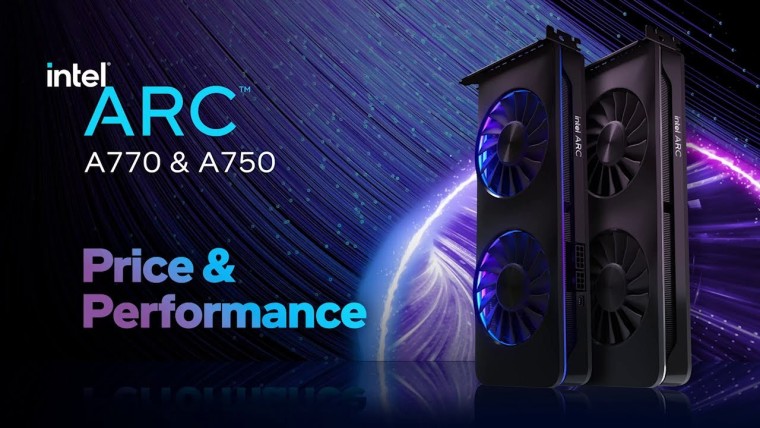
Intel is set to enter the discrete graphics market in a big way with its Arc GPUs. The company has adopted the strategy of gradually releasing performance and pricing information before its inevitable release in about two weeks time.
At its Innovation 2022 event, the company announced the Arc A770, the flagship Alchemist graphics card which starts at $329 for the 8GB model and $349 for the Limited Edition 16GB model. Following that, today, Intel has revealed the pricing of the Arc A750, which is a slightly cut-down variant with 28 Xe Cores instead of 32 on the A770. The latter features the full ACM-G10 GPU die.
 |
 |
Intel also highlighted how the pricing of Nvidia's 50-tier and 60-tier cards have gone up over the generations. The company has shown, with the help of a chart, that there has been a steady rise which has now culminated in the RTX 3060 being currently priced at around $418 according to averaged Newegg data.
_story.jpg)
This is where Arc steps in, says Intel, to "bring back balance" to the GPU market. Using the price indicated in the above chart, the company claims Arc A770 and A750 will respectively provide 42% and 53% more performance-per-dollar than the GeForce 3060.

A detailed breakdown of the performance-per-dollar for the A750 against the RTX 3060 has been given below at 1440p high and 1080p ultra presets :
 |
 |
While this is all good and dandy, it is a bit bizarre to see Intel completely ignore AMD Radeon RX 6000 series GPUs which have consistently been selling at much better prices on places like Newegg and Amazon. Intel has been sharing performance figures for the Arc A750 for a long time and not one time has it drawn comparison with AMD's cards. This may have to do with the fact that Arc's value wanes when it is compared to AMD's 6000 series cards, at least for rasterization performance.
Intel's Arc A750 is priced at $289 which is right up the alley of the Radeon RX 6600 series comprising the ~$249 RX 6600 and the ~$299 RX 6600 XT. The RX 6600 series performs in the vicinity of the RTX 3060 for raster output which means it will be the prime competitor for the A750.
Meanwhile, the Arc A770 at $329 and $349 will be up against AMD's RX 6700 10GB and 6700 XT 12GB models which fluctuate around ~$349-$399. The RX 6700 series competes with the RTX 3060 Ti in terms of non-ray tracing performance. This means you can actually get better performance on the 6700 series GPUs from AMD as long as you don't care about ray tracing.
Ironically, this looks the exact opposite of the CPU market where Intel's 13th Gen Raptor Lake platform seems to be outperforming AMD's Ryzen 7000 in value.
Source: Intel

_small.jpg)













13 Comments - Add comment